Attractions
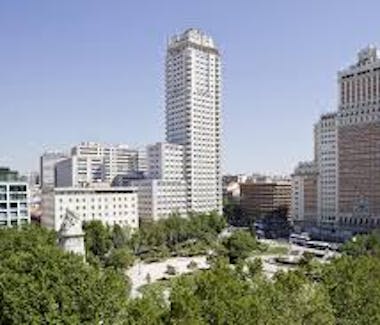


Plaza de España, Madrid, Spain
Plaza de España
The Plaza de España (Spain Square), located between Calle Princesa and Gran Vía, is one of the main centres in Madrid and is very popular among both tourists and locals.
The Plaza de España is 36,900 square meters, thus one of the largest squares in the country. Its central location makes it ideal to take photographs or rest on one of its many benches watching people go by before heading to your next attraction. This square also has a number of restaurants, cinemas, theatres, stores and shows nearby.
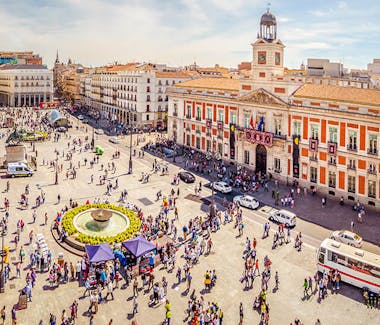
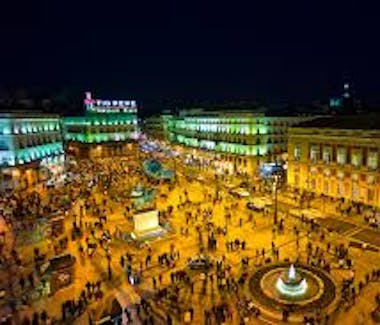
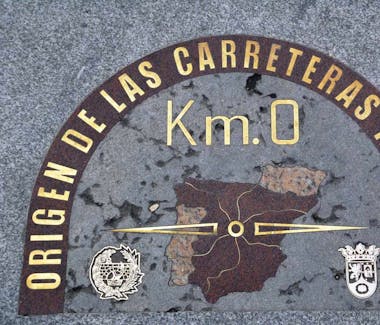
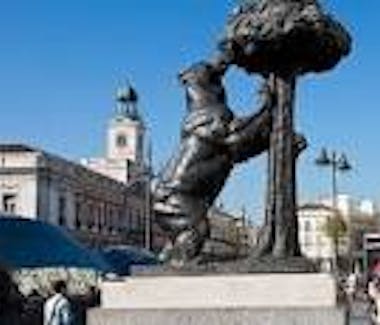
Puerta del Sol, Madrid, Spain
Puerta del Sol
Puerta del Sol is one of the nerve centres of Madrid. The first buildings surrounding this area were begun in the 16th Century, although the square took on the importance it holds today with the construction of the Casa de Correos building in 1768. In the 19th Century the square was completely transformed and between 1857 and 1862 it took on its current look following the demolition of a number of buildings. This site, “kilometre zero” from which all radial roads out of Madrid start, has witnessed many different historical events, including the Esquilache Mutiny in 1766, the resistance against Napoleon’s troops on 2nd May 1808 and the coronation of Fernando VII in 1812.
Puerta del Sol must not be missed. It features several attractions, such as the “Oso y Madroño” (the “Bear and the Strawberry Tree”) statue, next to Calle Alcalá, and the equestrian statue of Carlos III standing nine metres tall. The square is closely linked to the New Years Eve tradition of eating twelve grapes at midnight, one on each chime. The large clock that dominates the square sees the new year in for many Spanish people.
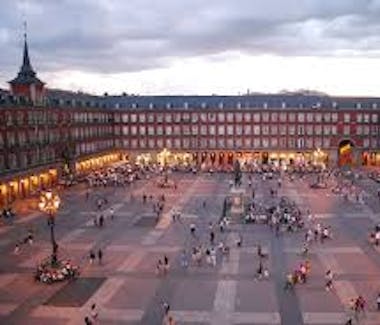
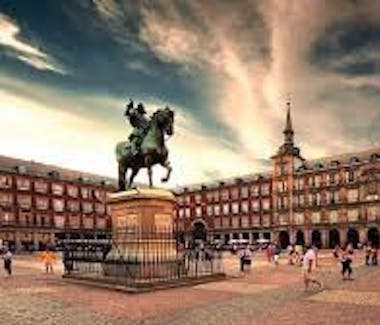
Plaza Mayor, Madrid, Spain
Plaza Mayor
Plaza Mayor is a symbol of Madrid and must not be missed. Building work began on this huge open area in the city centre in the 17th Century under the orders of Felipe III, whose bronze equestrian statue adorns the square. It was opened in 1620 and is rectangular in shape, with arcades running around the edges. This site used to be the venue for many public events, such as bullfights, processions, festivals, theatre performances, Inquisition trials and even capital executions. Underneath the arcades there are traditional shops, as well as a wealth of bars and restaurants. In the square a number buildings stand out, such as Casa de la Panadería, with its fresco-decorated façade, and Casa de la Carnicería.



Plaza de Chueca, Plaza de Chueca, Madrid, Spain
Chueca
The Chueca quarter is the epicentre of gay Madrid and a symbol of modernity, avant-garde and open-minded tolerance. Its streets are a great place for anyone looking for fun, fashion and lots of atmosphere.
The Chueca quarter is in the centre of the city of Madrid, and its main hubs are the Plaza de Chueca square and the streets of Fuencarral and Hortaleza. In recent years this area has become an outstanding illustration of the freedom and openness of Madrid society and is home to numerous venues which are popular with the LGBT community, alternative fashion centres and a host of opportunities for fun, in an anything-goes atmosphere.This is a neighbourhood where you can enjoy fashion in all kinds of different shops: everything from the most avant-garde designs to top labels, including establishments dedicated to practically all the urban tribes. These streets are also ideal for strolling with friends by night, as there are a large number of clubs where you can either enjoy a quiet drink or dance until dawn. In addition you'll find numerous gastronomic options with designer eateries and traditional restaurants, and others serving international cuisine. And all in an atmosphere of tolerance and diversity.Chueca is also the centre of the Gay Pride Festival which is held every year between June and July and fills the streets with music, colour, high spirits, as well as the thousands of people who flock to the neighbourhood intent on having a good time.

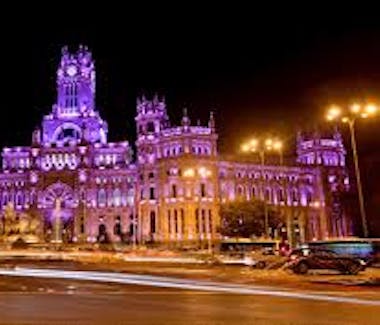
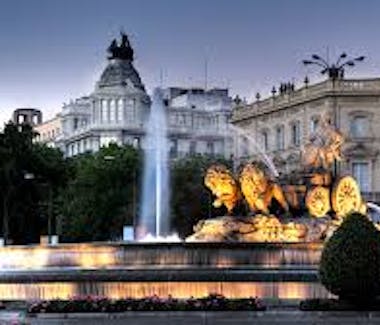
Plaza de Cibeles, Madrid, Spain
Cibeles
This is one of the liveliest, best-known and most beautiful squares in Madrid, and is home to such emblematic monuments as the Cibeles Fountain and Palace. This is a visit not to be missed on any trip to the city.
The Cibeles fountain, the symbol of Madrid, stands in the middle of the square. Goddess of nature and protector of the town, this sculpture was designed by Ventura Rodríguez in 1777. An interesting fact is that the Real Madrid football fans gather around this monument to celebrate their club's major victories.Also in this square is the Cibeles Palace (today the site of the City Hall) which also houses the cultural space known as CentroCentro (with an exhibition hall and auditorium, and a viewing platform offering outstanding panoramic views over Madrid); and the Glass Gallery, a space which is available to all (designed as an events venue) and featuring a spectacular glass vault.Other famous buildings such as the Bank of Spain, the Linares Palace and the Buenavista Palace also stand in this square. This is the start of the well-known avenue of Paseo del Prado.
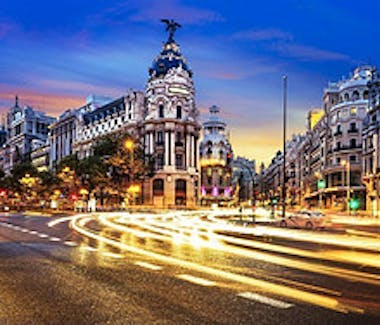
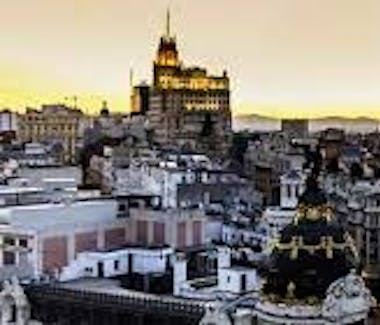
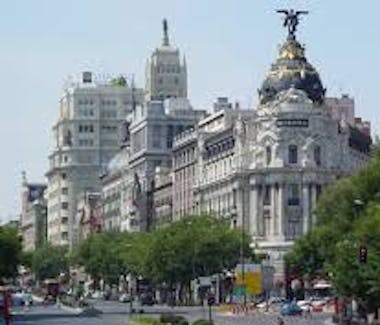
Gran Vía, Madrid, Spain
Gran Vía
Built between 1910 and 1929, Gran Vía is Madrid’s most famous street, connecting Calle de Alcalá and Plaza de España.
Gran Vía is Madrid’s best-known street. In the past, the avenue used to be called “Avenida de Rusia” because of Russia’s support of the Spanish Republic or “Avenida del quince y medio”. During Franco’s dictatorship, Gran Vía was renamed “Avenida de José Antonio”, after the founder of the fascist party.
The project of the Gran Vía avenue took several decades to complete.The first blueprints of the street date back to 1862, when part of the city centre was renovated. However, the final project was not presented until 1899 by the architects José López Salaberry and Francisco Octavio Palacios and the boulevard was finally completed in 1929.
The Gran Vía was one of the most challenging urban constructions in Spain as it was necessary to demolish over 300 buildings and 50 streets. Thanks to this thoroughfare, the city centre was better connected to the north-eastern part of Madrid.
Currently, Gran Vía houses numerous restaurants, bars and clothing stores, cinemas and theatres. In the past few years, and although many of the theatres and cinemas have closed, Gran Vía retains its reputation as the Spanish Broadway.
Gran Vía is one of the streets with the most nightlife in Madrid and it is said that to be the street that never sleeps. It is also one of the most important shopping streets and houses Primark’s second largest shop in the world, as well as other well-known brands like Zara, Loewe, H&M, Sfera and Pull and Bear.
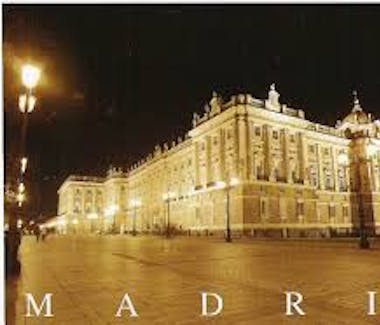
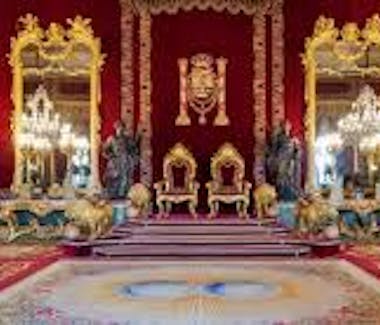
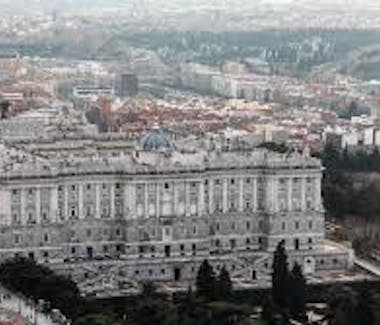
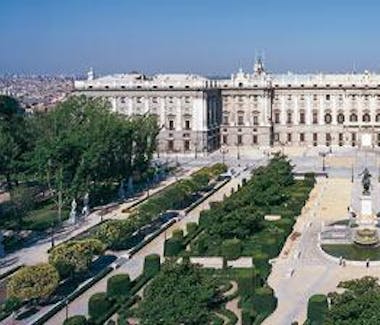
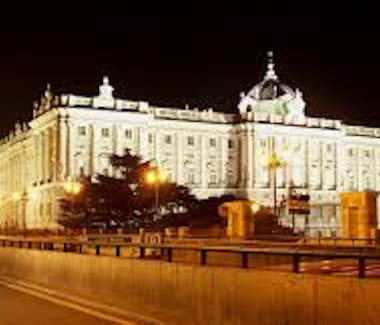
Palacio Real, Madrid, Spain
Palacio Real
The home of kings
Madrid's Royal Palace was built in the 18th century by order of Philip V on the site of the old Alcázar fortress, a former Moorish castle. Sachetti began the works in 1738, and the building was completed in 1764. Sabatini designed the southeast wing and the great staircase, or staircase of honour. It has a square floor plan with a large central courtyard. The Puerta del Príncipe gateway on the east side gives access to the central courtyard. The Sabatini and Campo del Moro Gardens are among the Palace's other attractions, as well as its several different façades. There is some debate as to its artistic style; it is thought by some experts to belong more to the Baroque, and by others to the Neo-classical style. Of particular note among its numerous rooms are the Royal Guards' Room, the Columns Room, the Hall of Mirrors and King Charles III's room. It also contains paintings by Velázquez, Goya, Rubens, El Greco and Caravaggio.
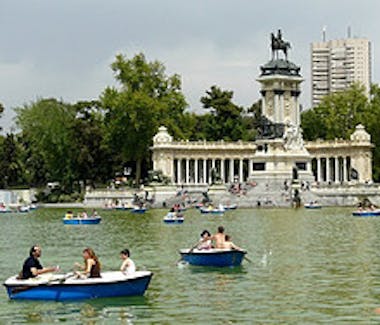
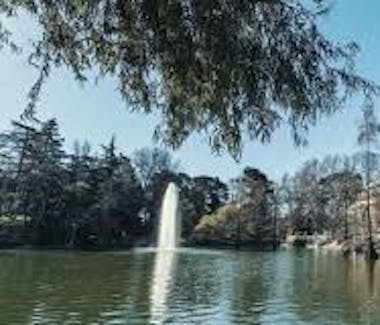
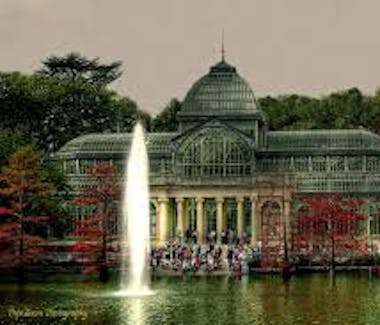
El Retiro Park, Plaza de la Independencia, Madrid, Spain
El Retiro
El Retiro Park has become Madrid’s most renowned park since it was first opened to the public in 1868. The park’s official name is Parque del Buen Retiro.
El Retiro is packed with things to see like monuments, galleries, statues, lakes and magnificent buildings. There are also numerous activities on every day, from yoga, roller-blading, puppet shows, musicians, fortune tellers and stands with food and different objects for sale.
Top attractions:
- Estanque (Lake): The gardens house a large artificial lake where many locals and tourists rent rowboats to explore the “Estanque” or you can hop on a larger boat that goes around the pond. It is very close to the entrance of Puerta de Alcalá.
- Monument to King Alfonso XII: This enormous monument is located on the edge of the artificial lake and was inaugurated in 1922. On Sundays, musicians normally gather near this landmark to play various instruments.
- Palacio de Cristal (Crystal Palace): Built in 1887 in a wooded area with a small artificial lake, full of small tortoises, the Crystal Palace houses numerous contemporary exhibitions. When it was built, it was initially used as a greenhouse.
- Palacio de Velázquez (Velázquez Palace): Located very near the Palacio de Cristal, this art gallery always features temporary art exhibitions and is free to visit: highly recommended for fans of art.
- Paseo de la Argentina: Also known as the Paseo de las Estatuas(Statue Promenade in English) is a broad promenade with two lines of statues dedicated to Spain’s monarchs. The first statues were commissioned by Ferdinand VI to decorate the Royal Palace.
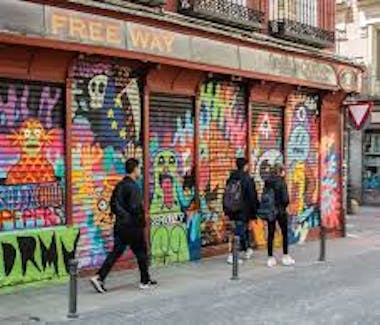
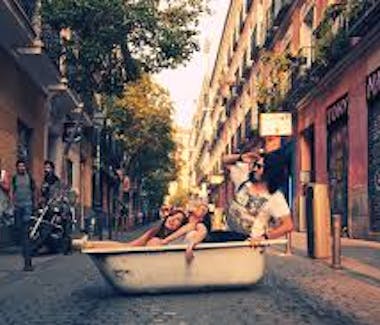
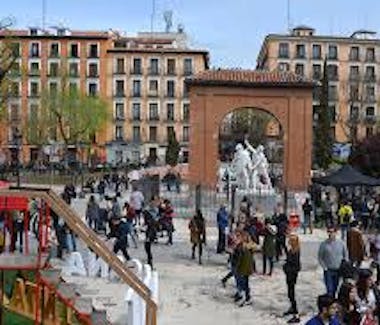
Malasaña, Madrid, Spain
Malasaña
In the heart of Madrid is Malasaña, the youngest and most creative part of the city, where tradition and the cutting edge live in perfect harmony. Gastronomy, shopping, art, culture and nightlife: entertainment in Malasaña is guaranteed.
Beyond the typical tourist routes of the city, Malasaña is one of the most rapidly changing areas of the city. More than 200 years old, the ‘barrio’ takes its name from a seamstress murdered during the French occupation during the uprising of 2nd May 1808. In the 1980’s, it became the epicentre of the famous ‘movida madrileña’ and has not stopped evolving since then, so much so that every time you go there you seem to find something new. Nowadays it’s considered the hipster district, with its own way of life and unique atmosphere. Ordinary, everyday bars and traditional shops sit side by side in perfect harmony with the latest trends, fashionable hang-outs and an endless array of alternative cultural offerings.The best way to get to know Malasaña is by wandering through its streets and alleyways, spreading from its main artery, calle Fuencarral, where all the best-known brands are centred. If you’re looking for something a bit different or unique, there are independent design and vintage fashion shops in the calles Espiritu Santo and Conde Duque. Two of the most original are in Plaza del 2 de Mayo - the epicentre of the barrio, full of roof terraces – namely Sin clon ni son and Taller de FEEAS, next to the Conde Duque cultural centre. This area also has two unmissable stops for foodies: a bakery called Panic, which sells the best bread in the city, and La Queseria de Conde Duque, a fascinating cheese shop where producers of artisan cheeses sell directly to the public.To regain your strength and enjoy a good coffee and a piece of homemade cake, the places to be are Toma Café on Calle de la Palma, and Federal on Plaza de las Comendadoras. If the weather’s good, it’s worth making a stop at the idyllic Café del Jardín, a tea room inside the Museo del Romanticismo (the Romanticism Museum), an 18th century palace converted into one of the most charming museums in Madrid. The classic Café de Ruiz, from the turn of the century, is also a perfect place for a date or a gossip.Malasaña also has a wealth of places to eat. From Bodegas La Ardosa - one of the oldest tavernas in Madrid and where you can try a delicious vermouth on tap and one of the best ‘pinchos’ of Spanish tortilla in the city – to Juanjo López’s Tasquita de Enfrente, which was established 50 years ago as a traditional bar and has now been turned into one of the restaurants to go to, where the produce and techniques are of the highest standard, retaining the essence of Spanish cuisine with a touch of innovation. For wines and tapas, Bar Amor and Taberna MUY are two sure bets. The recently opened La Pescadería, with a space divided into various rooms, is perfect for a casual dinner as a couple or in a group.At night, Malasaña shines in all its splendour and its side streets are full of people and bars where you can get a good cocktail, listen to live music or dance until dawn. The liveliest streets are Corredora Alta, Corredora Baja, Palma and Pez. One of the coolest hangouts is there, The Passenger, fitted out like an old train carriage. Also in those streets are Adam & Van Eekelen and 1892, experts in gin and tonic. Kikekeller, a deisgner furniture shop with a hidden cocktail bar in the back is in Corredora Baja. And to listen to live music or dance till the small hours, are Café de La Palma and, two classics on the Malasaña scene, Barco and La Vía Láctea.In terms of cultural and leisure offerings, new kinds of places triumph, such as Microteatro por Dinero, an old brothel transformed into a theatre where five 10-minute pieces are shown each night in tiny bedrooms for a maximum of 15 viewers, for a price of 4 euros. Very nearby is Teatro Lara, one of the oldest in Madrid, which always has an interesting and well-priced programme. In the Conde Duque area is Museo ABC de Dibujo e Ilustración (Drawing and Illustration Museum), the art galleries Blanca Berlín and Mozart, and the Centro Cultural Conde Duque (the Conde Duque Cultural Centre), where you can enjoy concerts and exhibitions.
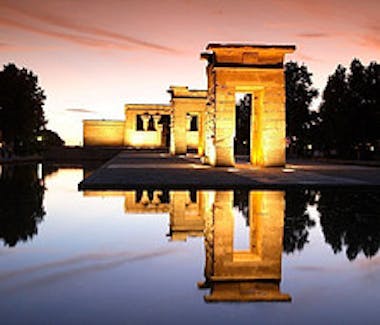

Templo De Debod, Madrid, Spain
Templo de Debot
The Temple of Debod is one of Madrid’s most beautiful hidden treasures. It sits to the west of Plaza de España, in the Parque del Oeste.
This ancient Egyptian temple is from the second century B.C. and was donated to Spain by the Egyptian state for helping save the Abu Simbel temple, as well as other monuments and archaeological sites, from being buried under the construction of the Aswan High Dam.
The Debod Temple was dismantled and transported to Spain, but it took two years to rebuild, since there were no reliable blueprints of the structure and some of the stones got lost during the shipment and had to be replaced. Finally, Debod was opened to the public on 20 July 1972.
In the early seventies, the temple was not properly kept and the Park was considered unsafe. However, nowadays, the Oeste Park is a favourite green space for locals. As well as housing the Temple of Debod, it has a beautiful rose garden and great views of the Casa de Campo. As for the temple, the city council is making efforts to preserve it.
The Temple is surrounded by numerous species of plants, trees and lush, green lawns. Many locals gather here in spring, summer, autumn and winter with drinks and picnics or come here to do some yoga or just to simply relax and enjoy the views. The best time to visit Debod Temple is just before the sun sets, ensuring a breath-taking view of the Temple in all its splendour with a beautifully lit sky in the background. If you stay a little longer, it is also worth seeing the monument lit up at night.
The shrine’s interior is free to visit and is well worth exploring. Although it isn’t as well preserved as other Egyptian temples, its walls are covered by hieroglyphics and sculptures and it also includes interesting information about Egypt’s mythology and society. Moreover, on the upper floor is a curious miniature with the various temples in Nubia.
